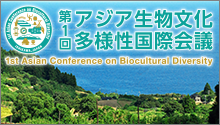On December 10th, Dr. Juan (Researcher, UNU-IAS OUIK) led an outdoor activity with 57 sixth-grade students from the Municipal Saiou Elementary School in Kikugawa, Kanazawa, as part of the Sustainable Urban Nature Project, following the lecture first lecture on September 27th.
The activity aimed to foster a connection with nature, highlight the biocultural diversity around the school, and raise awareness of urban nature’s benefits and challenges.
The activity had three main highlights:
-
Sketching the Landscape by the Sai River
Students spent 15 minutes sketching the landscape, focusing on the snow-capped Hakusan Mountains, the Sai River, the cityscape of Teramachi, and people exercising along the river. Dr. Juan explained how Kanazawa’s water resources—snow, rivers, and historical canals—are integral to its biocultural diversity, with students taking notes on tablets. -
Mapping Gardens Along the Kuratsuki Canal
Students walked through the neighborhood, identifying tree species and observing abandoned houses. At the Kuratsuki Canal, Dr. Juan shared how the canal still irrigates local gardens, including the Hiraki, Sugita, Ikeda, and Fujii family gardens, known for their high biodiversity, such as fireflies in June. -
Learning About Urban Farming on Abandoned Lots
Students visited a community garden on an abandoned lot, where they learned about transforming such spaces into urban green areas. They observed various plants, including vegetables like daikon and broccoli, and aromatic plants like lavender, which help repel insects.
The activity concluded with a return to the Sai River, where students shared their thoughts in preparation for the next day’s task of teaching fifth graders about biocultural diversity. Teachers and Dr. Juan are looking into continuing this series of activities, as early awareness is crucial for preserving Kanazawa’s biocultural diversity.





